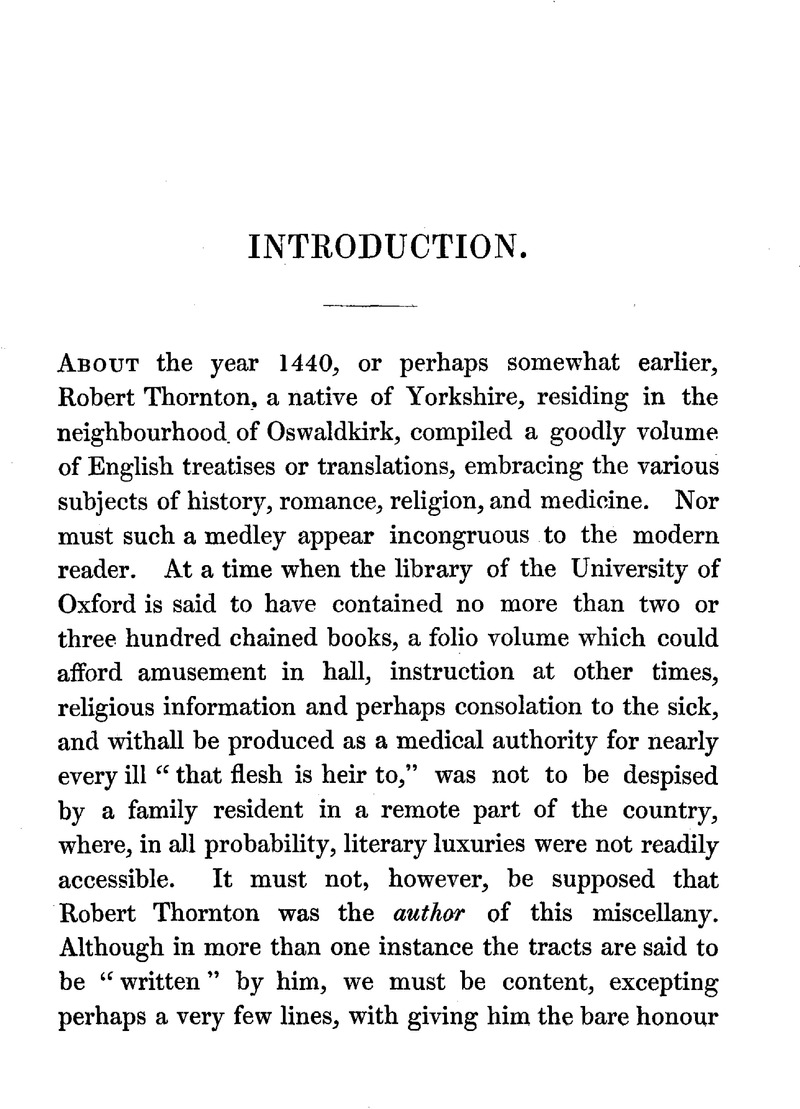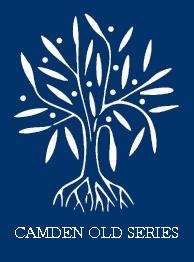No CrossRef data available.
Article contents
Abstract

- Type
- Introduction
- Information
- Camden Old Series , Volume 30: The Thornton Romances. The Early English Metrical Romances of Perceval, Isumbras, Eglamour, and Degrevant. , December 1844 , pp. v - xxiv
- Copyright
- Copyright © Royal Historical Society 1844
References
page vi note * Hist. Lib. de France, xv. 196. According to the Bibliothèque des Romans, 1734, p. 250, it contains 60,000 lines; but this difference is apparently owing to a mistake made by Borel, who took three romances for one. Tyrwhitt falls into the same error; Notes to Chaucer, p. 292.
page vii note * Roquefort, de l'état de la Poésie Françoise dans les xiie. et xiiie. siècles, 8vo. Paris, 1815, p. 194.
page vii note † Galland ascribes the romance to Raoul de Beauvais, an error which has been repeated more than once. See Warton's Hist. Engl. Poet., i. 137; Scott's Sir Tristrem, p. 42.
page vii note ‡ See Fauchet, Recueil de l'origine de la langue et poesie Françhise, Paris, 1581, p. 103. Several writers have confused Manessier with Chrestien de Troyes. Among them is Bouhier, Notes sur Du Verdier, t. i. p. 315. Owing to the conflicting opinions of various writers, a curiously confused account of the authorship of the metrical Perceval is given in Dunlop's History of Fiction, ed. 1816, vol. i. pp. 201–2.
page ix note * Hist. Lit. de France, xv. 247.
page ix note † This is the MS. that was used by Galland. It contains 262 leaves, written on vellum, but imperfect at both ends. The Arundel MS. has only the first part.
page ix note ‡ Reliques, ed. 1840, p. 189. See an early notice of another MS, in Devon's Issues of the Exchequer, 1837, p. 213, which may, however, be the St. Graal.
page xiv note a The late Mr. Bright possessed a fragment of an early MS. of this translation. See the sale catalogue of his Manuscripts, 8vo. 1844, art. 175.
page xvi note * Described in the Mabinogion, p. 412.
page xvi note † Introduction to Syr Gawayne, p. xliii.
page xvi note ‡ Notes, p. 257.
page xvii note * This hero is mentioned in Sir Tristrem, p. 141,—
“That on was Douk Morgan,
That other Rouland Rise.”
page xvii note † The loss of Wade's romantic history must ever be a source of regret. He is thus alluded to in the unpublished Morte Arthure,—
”Ware thow wyghttere thane Wade, or Wawayne owthire,
Thow wynnys no wyrchipe, I warne the before.”
MS. Lincoln A. i. 17, f. 63.
page xviii note * See Notes, p. 259.
page xix note * MS. copies of this work are not uncommon. There is one in MS. Hatton 18, and, if I mistake not, part of another in MS. Sloane 1785, but I can scarcely judge from Ayscough's description, and have had no opportunity of comparing it with MS. Bibl. Reg. 17 C. VIII., which contains another copy. There is also a copy among the Rawlinson MSS., the reference to which I am unable to add.
page xx note * See Sir F. Madden's note in the new edition of Warton, ii. 368. Can John de Wageby, in Walter's Account of the Clavis Scientiæ, 8vo. Lond. 1816, be an error for John de Waldeby ? If so, it may be discovered that the Prick of Conscience is a translation from that author.
page xxi note * Copland's edition, containing fifteen leaves, A to D iii, in fours, has been reprinted by Mr. Utterson. See Notes, p. 270. It was “Imprynted at London, by me Wyllyam Copland.”
page xxi note † Specimens of Early English Metrical Romances, vol. iii.
page xxii note * Todd's Illustrations of Gower and Chaucer, p. 167.
page xxii note † Reprinted in 1827. Copland's edition is in the Bodleian, and Walley's in the British Museum. Copland is said to have printed two editions of Eglamour. Walley's edition contains twenty leaves, A to E iiij, in fours, “Imprynted at London in Foster Lane, at the sygne of the Harteshorne, by John Walley.”
page xxii note ‡ Printed in 1842, 8vo. and published by Mr. J. Russell Smith of Old Compton Street.
page xxiii note * Notes to Syr Gawayne, p. 312.


